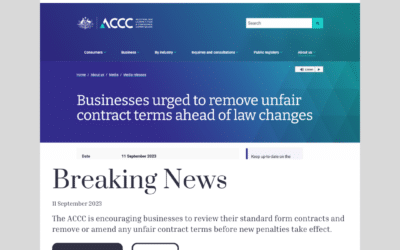
Now that you have started a business, you need to wear multiple hats. You are the director, marketer, administrator, HR. You are your very own one-stop-shop. To put it mildly, there is a lot to do. And, building a business involves many moving parts. One such part, that is incredibly important (and, also a lot of fun) in the early stages of business ownership, is the identity of your brand.
Now, if you aren’t a graphic designer, you will most likely hire one to create your branding – your logo, your colours, your visual identity. And, while you will fill out the design brief and put in your creative input detailing your vision and ideas, you aren’t the person who actually drafts the logo or creates the fonts and colours. You aren’t the one who brings your vision and ideas to life. The graphic designer has been able to piece together the information you have provided and created your brand identity for you. Pretty incredible stuff for those of us who don’t have a creative bone in our body.
“So, with that in mind, put on your legal hat now and ask yourself, who owns the work, the brand identity, created by the graphic designer? “
Good question, and one you should sort out prior to hiring an external contractor to do large and important works on your newly established business.
This graphic designer, we will assume in this article, is an external contractor, and not an employee. If the branding was designed during the course of employment, any work produced would generally be owned by the employer based on the agreement made.
So, now that we have that clear… Whether you are the graphic designer (external contractor) or you are the business owner who has contracted the service, it’s mutually beneficial for both parties to have an agreement in place prior to the commencement of the work, in writing preferably. Sure, verbal agreements are enforceable, but they can also be messier. Let’s keep it clean with a good old fashioned written agreement.
This agreement should specify the following, clearly:
- The name of the parties
- The exact work the graphic designer is being engaged to do
- The details surrounding payment such as how and when payment will be made (at stages, upfront, on completion, for example)
- What are the consequences for non-payment
- What are the consequences for failing to deliver the work within the specified time frame
- Who owns the intellectual property created
- Dispute resolution
- Limitations of liability
- The agreement should be signed by both parties.
We are going to highlight the ownership of the intellectual property point, above, and discuss it in more detail.
Who owns the copyright?
As the creator of the work, the graphic designer has copyright protections and exclusivity rights over the work. As a business owner, though, you want to own that real estate. You want to own your own logo and branding!
So, upon completion of the work, the agreement should state whether there will be a transfer of ownership (assignment) of the work to the business owner, or a licence will be put in place. A licence means that, as the business owner, you would not own the work, but you would have a right to use it. Ownership would remain with the graphic designer.
Regardless of which option you choose to proceed with, whether it’s an assignment or licence, it should clearly be set out in the agreement.
When starting a new business, there are many situations where you would need to engage the services of an external contractor. For example, with your website. You may choose to hire a web designer to build your website if you did not want to go down the DIY (‘do it yourself’) path. Again, you would complete the brief and provide the relevant information to the contractor, however, it is the web designer who would ultimately bring your vision to reality and would complete the work. Another example is hiring a professional photographer to take images of you for use on your website, social media, and other marketing materials, as you see fit.
As with the graphic designer scenario, you want to own your website in its entirety, and the photographs taken of you, for your use. Having a written agreement drafted up in advance is crucial so that ownership is transferred to you, the business owner, once the work has been completed. Having an agreement makes the transaction simple, clean and protects both parties.
The complexity of the agreement will depend on the nature of the business and the work being completed. As a business owner, while there are templates you could easily source on the Internet, it is crucial that the terms of the agreement suit your requirements and will provide you with the necessary protections.
Important disclaimer: The material contained in this publication is of a general nature only and it is not, nor is intended to be legal advice. If you wish to take any action based on the content of this publication, we recommend that you seek professional legal advice.

Book Your Appointment
Related Articles
Privilege Under Pressure: Insights from the Optus Case
A Shifting Legal Landscape Today's businesses are under constant threat from cyber attacks, making it increasingly important to understand how they can legally protect their private conversations. Legal professional privilege is a fundamental rule that keeps the...
Ticketek’s $500K Fine: A Legal Perspective on Email Compliance
In the constantly changing world of digital communication, email marketing remains a vital way for businesses to connect with their audience. However, it's crucial to manage this tool with care and attention to legal obligations. The Australian Communications and...
Navigating the Waters of Unfair Contract Terms in Australia
As a small business owner in Australia, you might have come across the recent updates to the Australian Consumer Law regarding unfair contract terms. If it seems a bit complex, don't worry! We're here to simplify it for you in clear terms. Unfair Contract...




